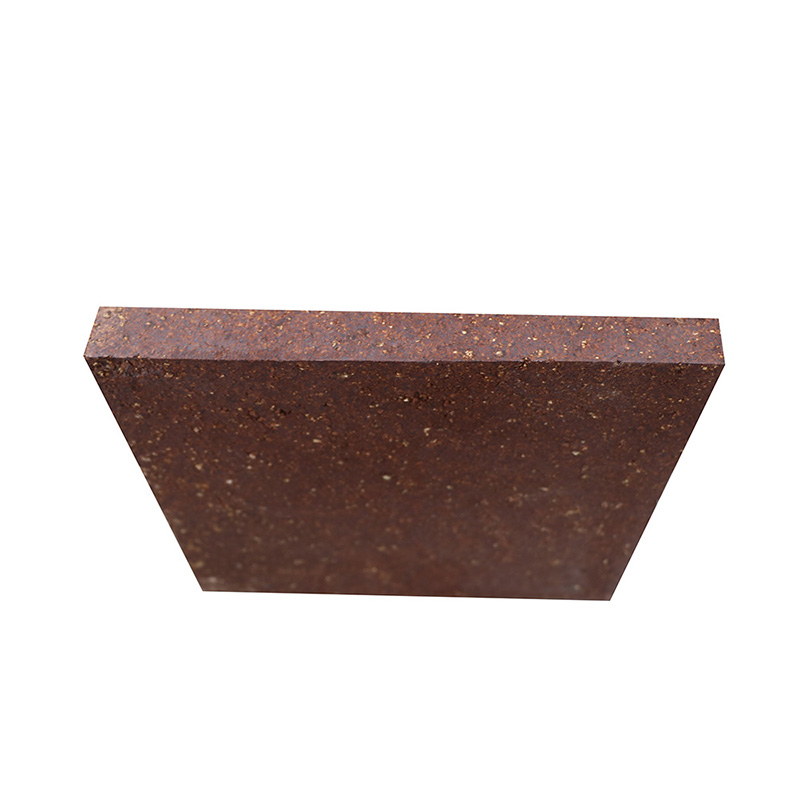Product introduction of magnesia hercynite brick
Magnesite hercynite brick is made of composite spinel and high-purity magnesite, added with special mineralizer, formed under high pressure and sintered at high temperature. It is a new generation of alkaline refractory with higher technical content. It is mainly used in the firing zone of large dry process cement kiln.
Feature of magnesia hercynite brick
During use, a layer of high viscosity iron calcium or aluminum calcium oxide is formed on the hot surface of the brick, which improves the performance of hanging kiln skin and the firmness of kiln skin, and is suitable for protecting lining bricks and prolonging the service life.
Due to the inconsistent thermal expansion of spinel and diopside during firing and cooling, the microcracks formed between them can cushion the stress impact caused by temperature changes and avoid brittle cracking of lining bricks.
Advantages of magnesia hercynite brick
- Low thermal conductivity (1000 ℃, 2.27W/m.K) and low thermal expansion coefficient (1000 ℃, 1.217%).
- With excellent structural elasticity, it has strong corrosion resistance and penetration resistance to K2SO4, Na2SO4, NaCl and KCl alkali salts decomposed from cement materials.
- Its high fire resistance and excellent thermal shock resistance under load make it suitable for the key parts of SP and NSP kilns with high kiln temperature, fast rotating speed, strong alkali corrosion capacity and large mechanical load.
Parameters of magnesia hercynite brick
| Type | KR-MFe-85A | KR -MFe-85B | KR -MFe-85C |
| MgO % | 85 | 85 | 85 |
| Al2O3 % | 3-5 | 3-5 | 3-5 |
| Fe2O3 % | 4-6 | 4-6 | 4-6 |
| SiO2 % | 1.5 | 1.8 | 2.0 |
| Bulk Density (g/cm3) > | 2.95 | 2.93 | 2.90 |
| Apparent Porosity(%) ≤ | 17 | 17 | 17 |
| Cold Crushing Strength (Mpa) > | 55 | 50 | 45 |
| Refractoriness Under Load (T6.0,9) > | 1600 | 1550 | 1500 |
| Thermal Shock Resistance (950℃-Air Cooling) (times) > | 100 | 90 | 90 |
| Thermal Conductivity (W/m.K) | 2.6 | 2.6 | 2.4 |
| Thermal Expansion (1400℃) % | 1.6 | 1.6 | 1.6 |

